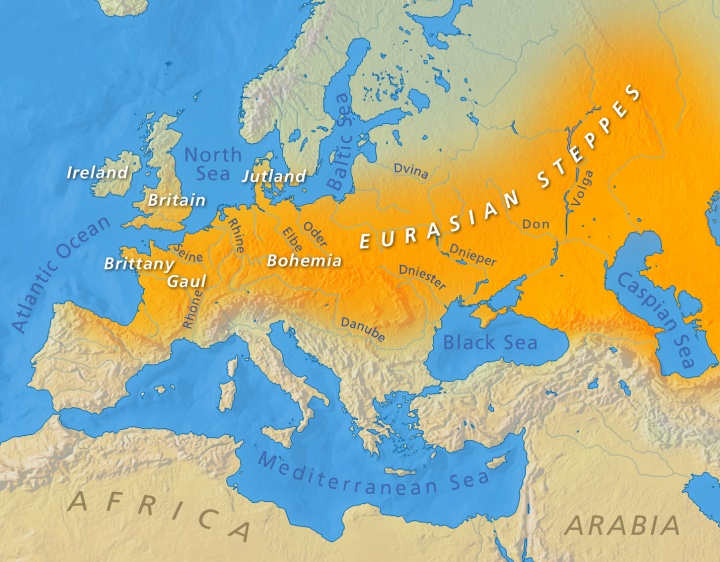The Geography of Celtic-Scythian Commerce

The trading patterns of the Celts of forested Northwestern Europe and the Scythians of the eastern plains is revealing. The highways of trade and travel in antiquity were the rivers and seas. Celts and Scythians were adept at traveling the waterways.
Neighboring peoples regarded the Saka Scythians who lived by the Caspian Sea as great fishermen. They were prodigious consumers of fish. As a result, some of them were called the Apa-saca, meaning the water Saca.
To the west the Celtic Veneti tribe had become a maritime power with more than 220 large oak vessels—whose cross timbers were a foot wide and secured by iron spikes as thick as a man's thumb. Their stronghold was in the western French peninsula of Brittany on Quiberon Bay. According to Roman sources, the Veneti traded not only along the coasts of Gaul, but for tin with Britain and Ireland.
Both Celts and Scythians exhibited exceptional skill in river and naval navigation, even as early as the last half of the first millennium B.C. Both groups had been deeply involved in river and sea commerce from the beginning of their appearance on the Eurasian steppes.
Archaeology and history reveal a great deal about Celtic and Scythian ethnic identity as exhibited in their trading activities and relationships. To understand the nature of their relationships we must understand certain geographical features of the steppe region.
Europe is shaped like a huge peninsula. In peninsular Europe, above the Mediterranean world, is what could be called a hub, or nexus, where the headwaters of its major rivers—the Rhine, Danube, Seine and Rhône—all come close together.
This hub was once a key link to the communication and trade flowing between the Atlantic, Nordic-Baltic, eastern Black Sea and Mediterranean trading zones. It was a major gateway to all of Europe.
From the Rhine River additional arteries branched off to the east in central Europe to wind up the river valleys of the Lippe, Ruhr and Main or northward along the Weser and Elbe. Another major pathway, critical to the precious amber trade, started at the sources for amber on the Baltic Sea shore in the Jutland Peninsula and adjacent areas.
This trade route extended south across the central German plain through Bohemia to where it intersected with the Danube near modern Vienna. From there it continued down the Danube to the Greek trading posts on the shores of the Black Sea. The Black Sea was the major trading hub at the eastern end of this route.
Deep penetrating rivers like the Dniester and the Dnieper led far into Eastern Europe, where a short portage could connect a traveler or migrant with the Dvina or the Vistula rivers.
These waterways provided direct access to most of Eastern Europe and the Baltic region. The eastern branch of Scythians, residing around the Caspian Sea, also had direct access to the Baltic Sea via the Volga River. The Volga was navigable past present-day Moscow. As Thor Heyerdahl, an ethnographer famous for his work on other ancient migration routes, has pointed out, the headwaters of the Volga are tantalizingly close to the headwaters of the Dvina, which empties into the Baltic at Riga.
In other words, both the eastern Scythians and the western Celts had the waterways of the continent—the "highways" of that day—at their disposal for trade. And they used them effectively. They were far from being a backward people limited to a simple nomadic life.
